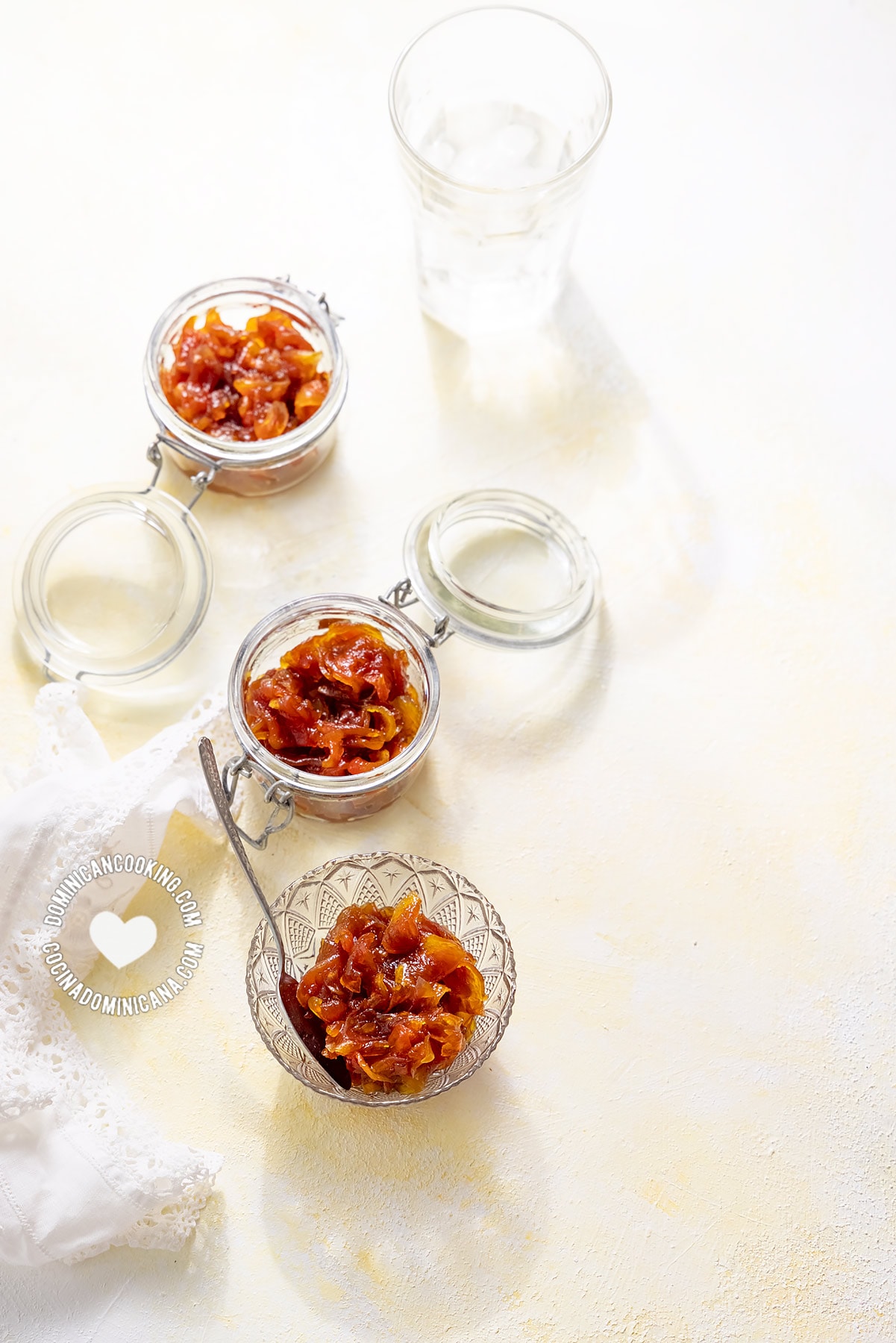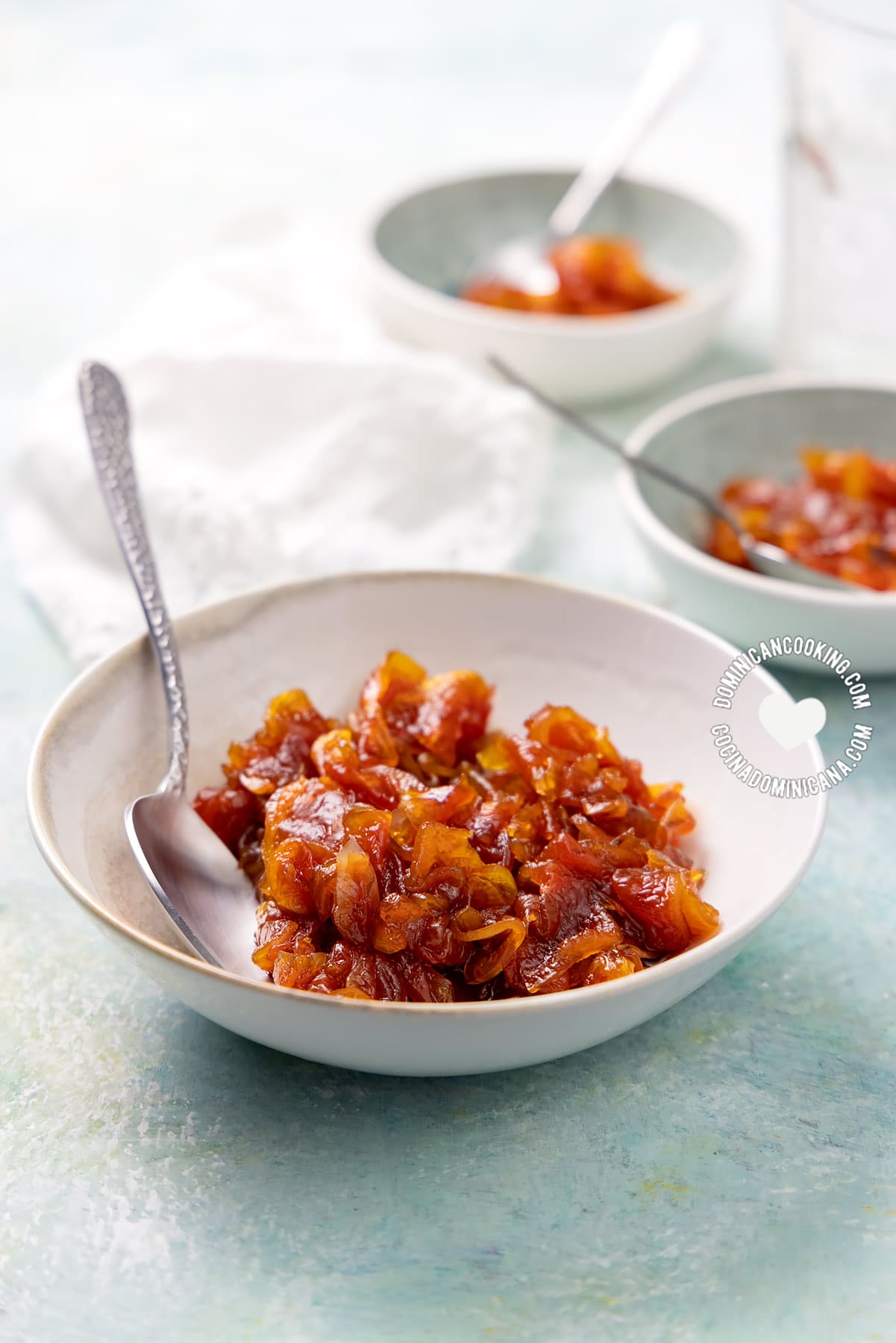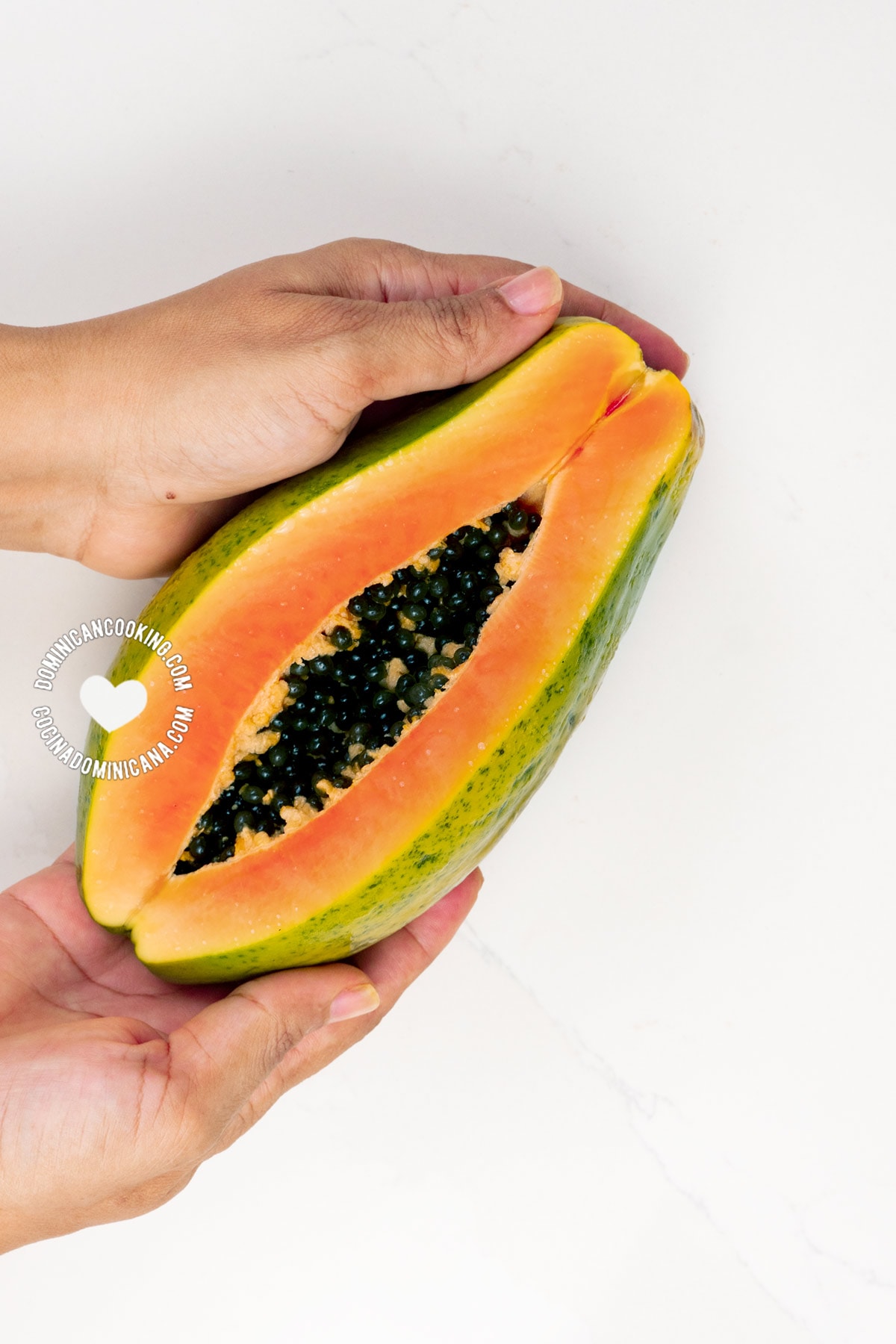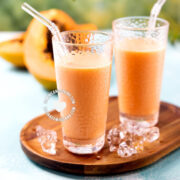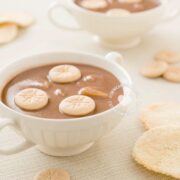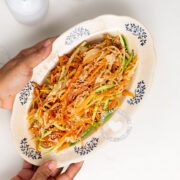Fruits in spiced syrup are a beloved Dominican tradition, and almost any locally grown fruit can be made this way. Dulce de lechosa, though not the most common, is a lovely version of this dessert.
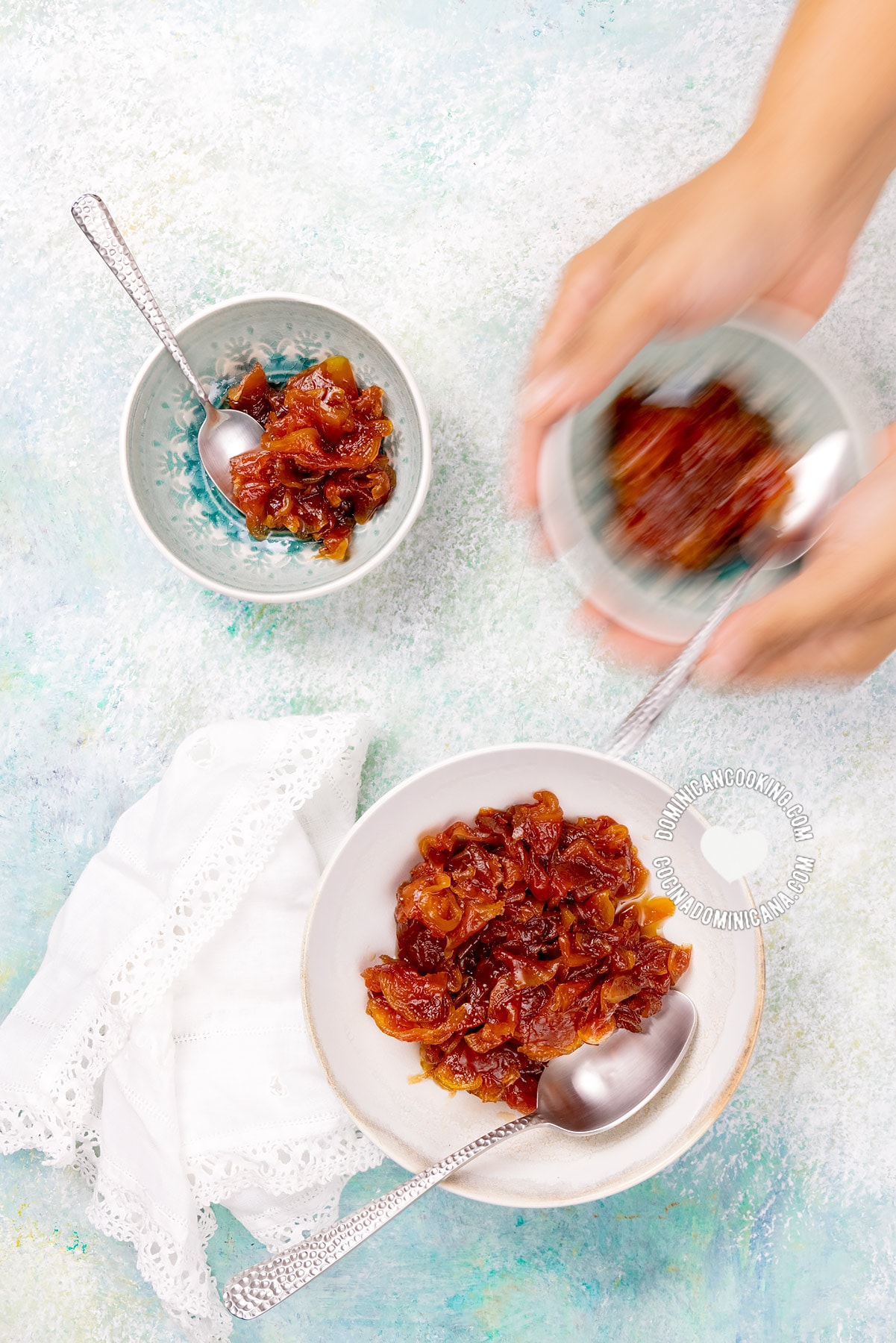
Why we ❤️ it
Some time ago I decided to make a video of a green papaya salad recipe we have in the blog, so I acquired a few unripe papayas for the task. In the end, I didn't need them all, so I had a couple to spare. That was the impetus behind me making this dulce de lechosa verde.
In the interest of full disclosure: The papayas were not actually green (only the peel was), but they were most definitely unripe. Green is used in our country to mean "unripe", and may or may not actually convey the color of the fruit or vegetable in question.
Cooking with green papaya
Technically, the word for these papayas would be acojoladas, a Dominican word that means "starting to ripen". The papayas were very firm (just like a tayota), not sweet, but had started turning orange inside. Why am I describing these papayas in such detail? There's a good reason:
Cooking with actual green (as green throughout) papayas is a more involved process. Papaya (the plant and unripe fruit) when cut oozes a milky substance (hence the name "lechosa", meaning "milky"). This substance has quite an unpleasant taste when ingested raw, and has a sticky mouthfeel. It also leaves stains on anything it touches, including your skin. Best to wear gloves for that.
Traditionally, the way to neutralize this milky substance for cooking green papaya was to steep the lechosa slices in ash water [1] (water with dissolved wood ash) or lime [2] (as in quicklime, not the fruit) before cooking. I don't have ash available, and will not be burning any wood to make it, I also don't have lime at home. So, on to the next-best more accessible, traditional method: brine.
About this recipe
Since I made this with papaya that no longer had sap, the brining part wasn't strictly necessary, but I did it for two reasons: a. to show you how to make it if you actually use green papaya, and b. because there is some salt left behind after rinsing the brine. That little touch of salt makes this even better, as it enhances the flavors in the dulce de lechosa even more.
But for the sake of laziness, I strongly suggest you use lechosa acojolada, life's too short to take the hard route, or cooking with gloves.

Recipe
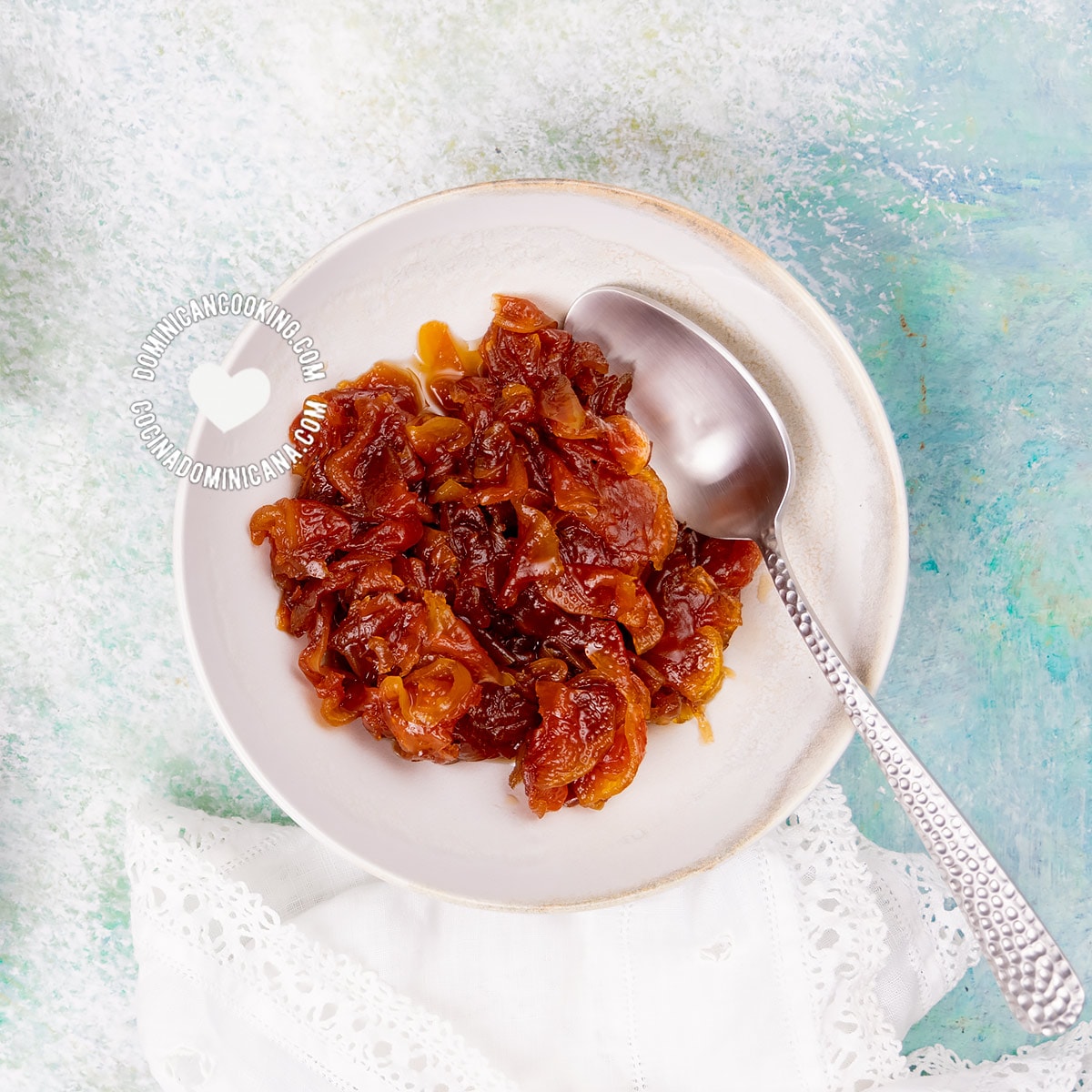
[Recipe + Video] Dulce de Lechosa (Candied Unripe Papaya)
Ingredients
- 1 unripe papaya, 1 lb [0.45 kg] (see notes)
- 1½ tablespoon kosher salt
- 1 cup brown sugar, (see notes)
- 3 cinnamon sticks
- 9 cloves
Instructions
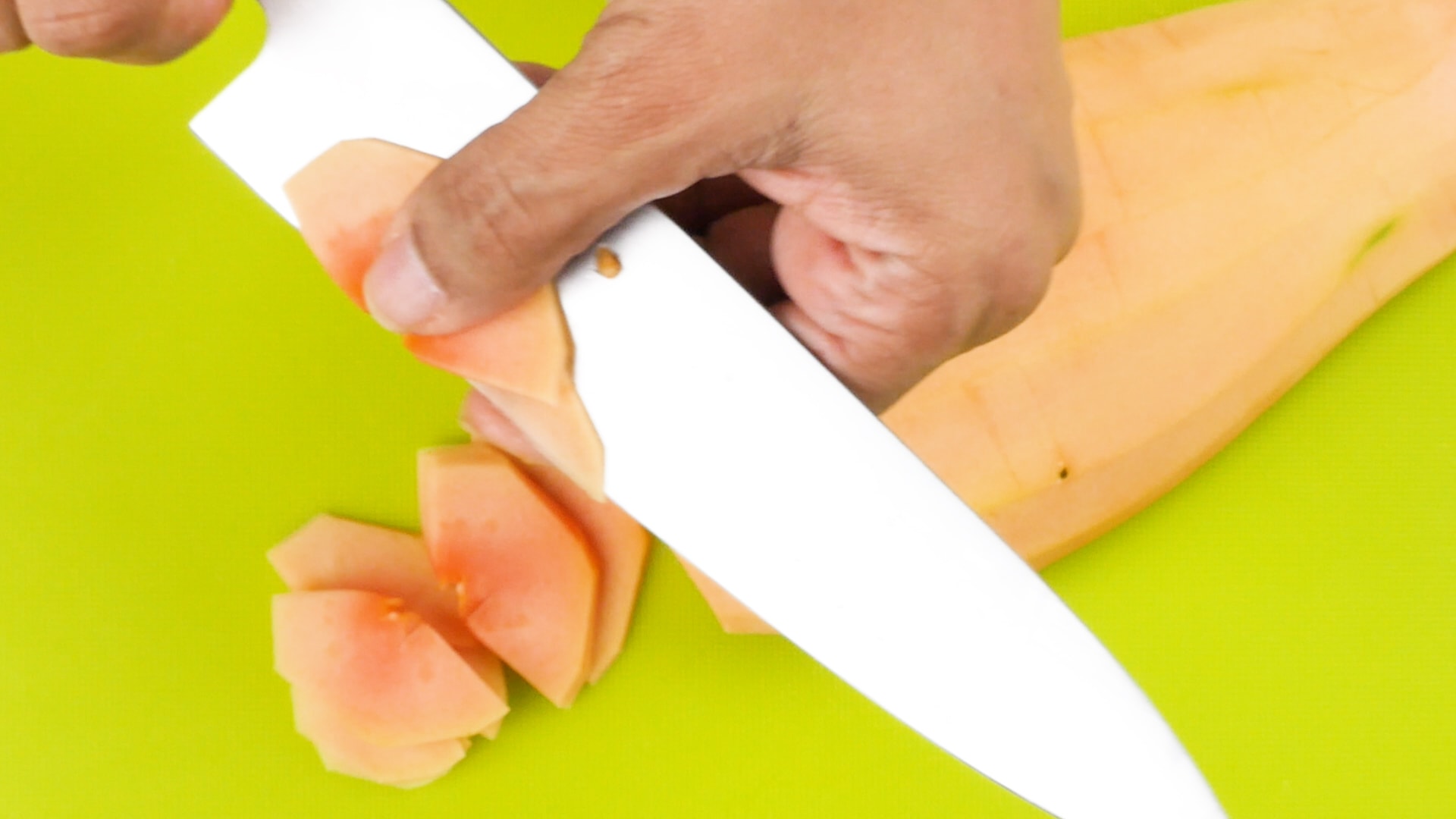 Slicing papaya: Cut into halves, peel, and discard seeds.With a sharp knife or --better-- a mandoline, slice the papaya very thinly.
Slicing papaya: Cut into halves, peel, and discard seeds.With a sharp knife or --better-- a mandoline, slice the papaya very thinly.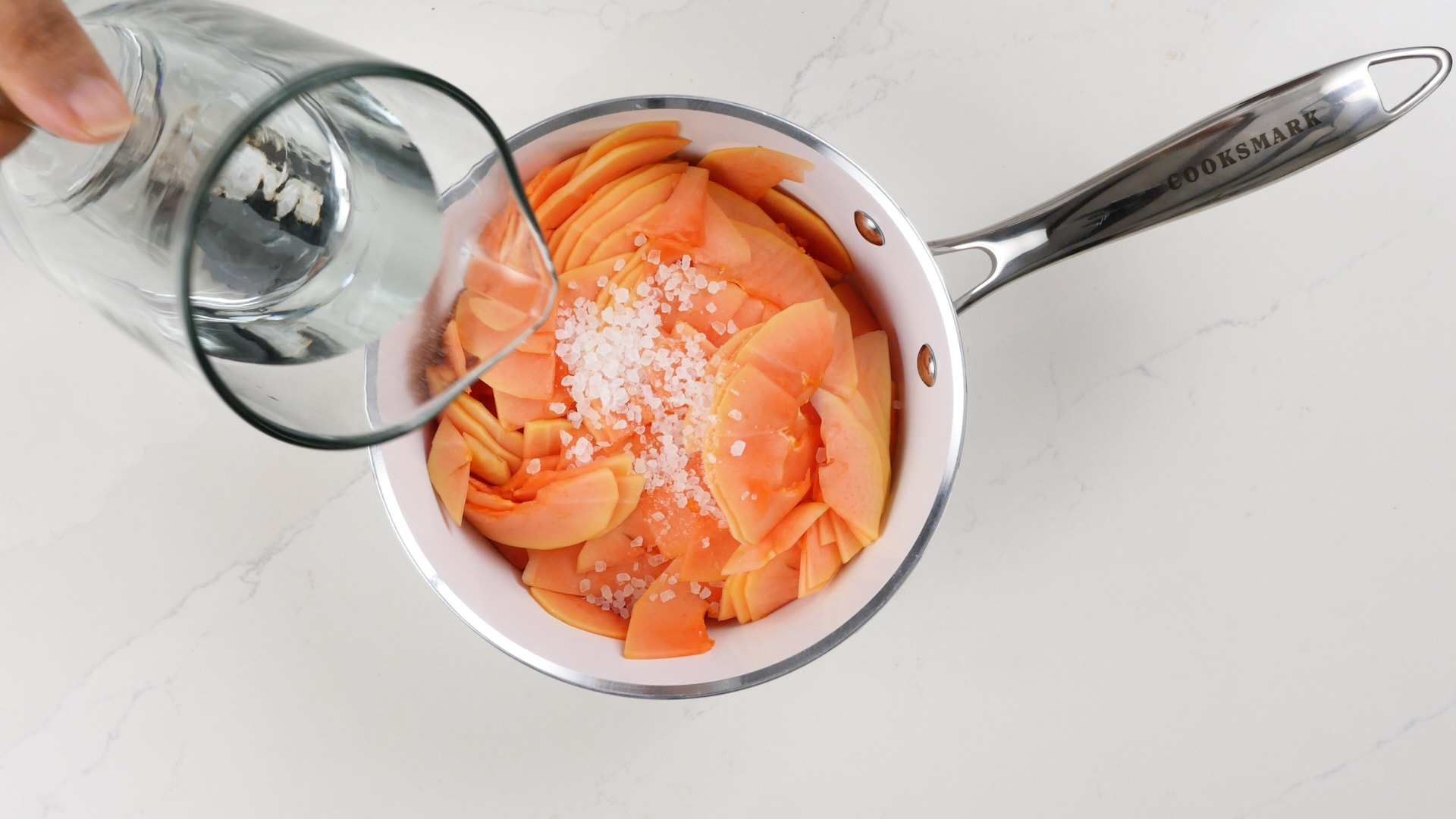 Brining: Place the sliced papaya in a medium saucepan, add salt, and enough water to cover. Heat over medium heat until it breaks the boil. Immediately remove from the heat. Let it cool to room temperature.
Brining: Place the sliced papaya in a medium saucepan, add salt, and enough water to cover. Heat over medium heat until it breaks the boil. Immediately remove from the heat. Let it cool to room temperature.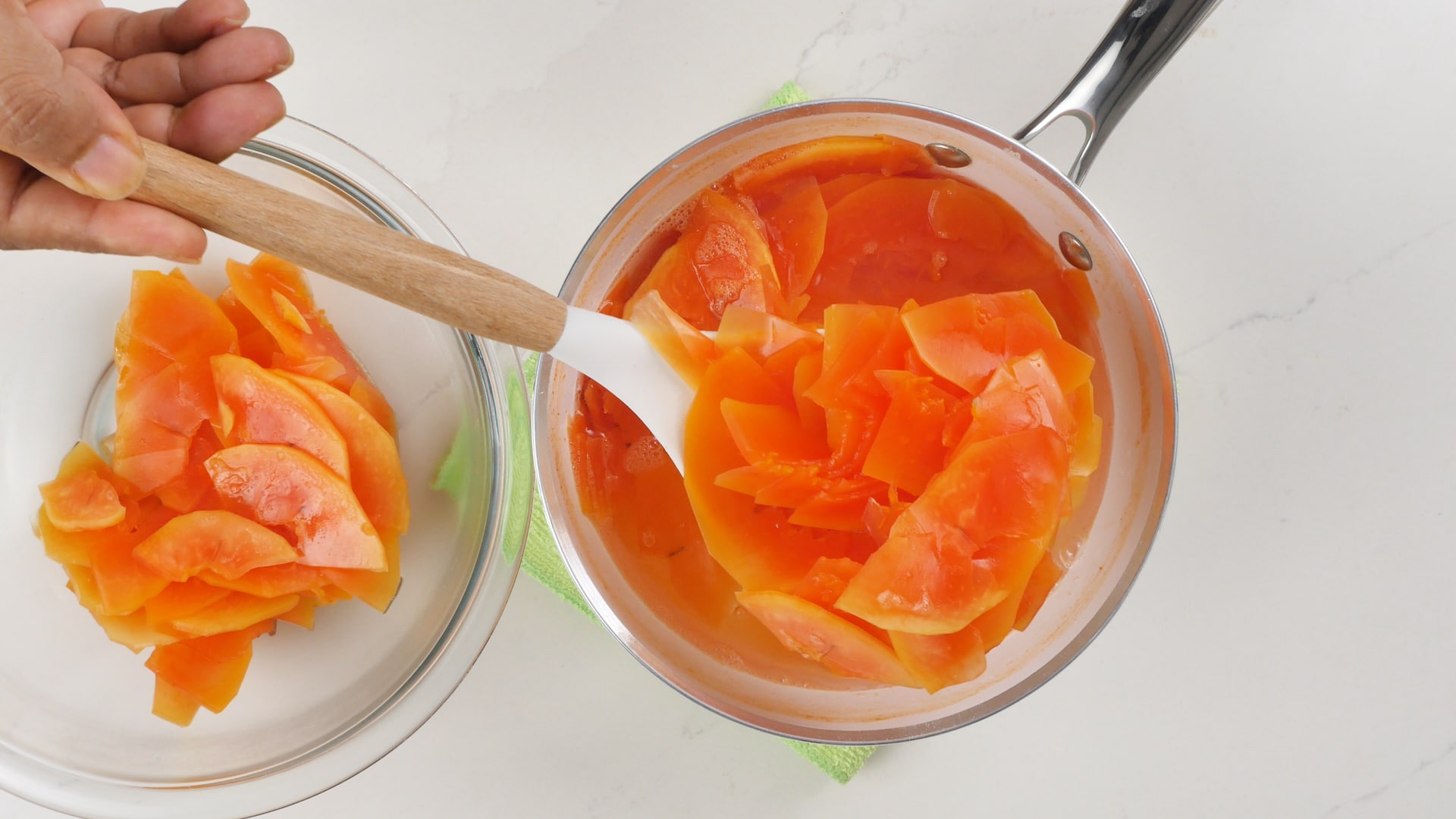 Rinsing: Remove the papaya from the water, and discard the water. Add enough fresh water to cover it, stir to rinse out the salt, and discard the water.
Rinsing: Remove the papaya from the water, and discard the water. Add enough fresh water to cover it, stir to rinse out the salt, and discard the water.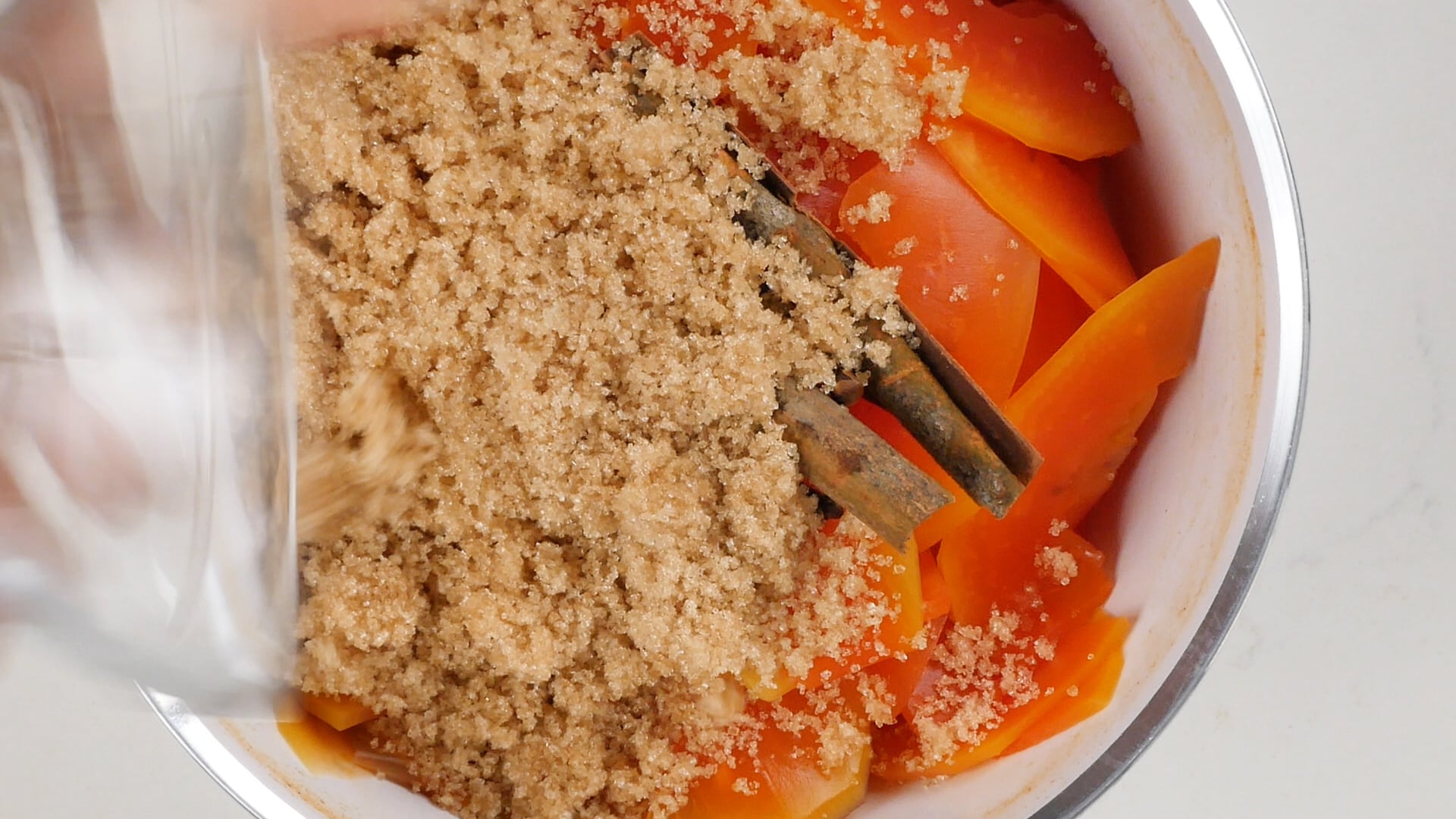 Cooking: Place the papaya in a small pot or medium saucepan, add cinnamon sticks, cloves, and sugar. Add ⅓ cup of water.Simmer over medium-low heat until almost all the liquid (the papaya will release some as it cooks) evaporates.Discard cinnamon sticks and cloves.
Cooking: Place the papaya in a small pot or medium saucepan, add cinnamon sticks, cloves, and sugar. Add ⅓ cup of water.Simmer over medium-low heat until almost all the liquid (the papaya will release some as it cooks) evaporates.Discard cinnamon sticks and cloves.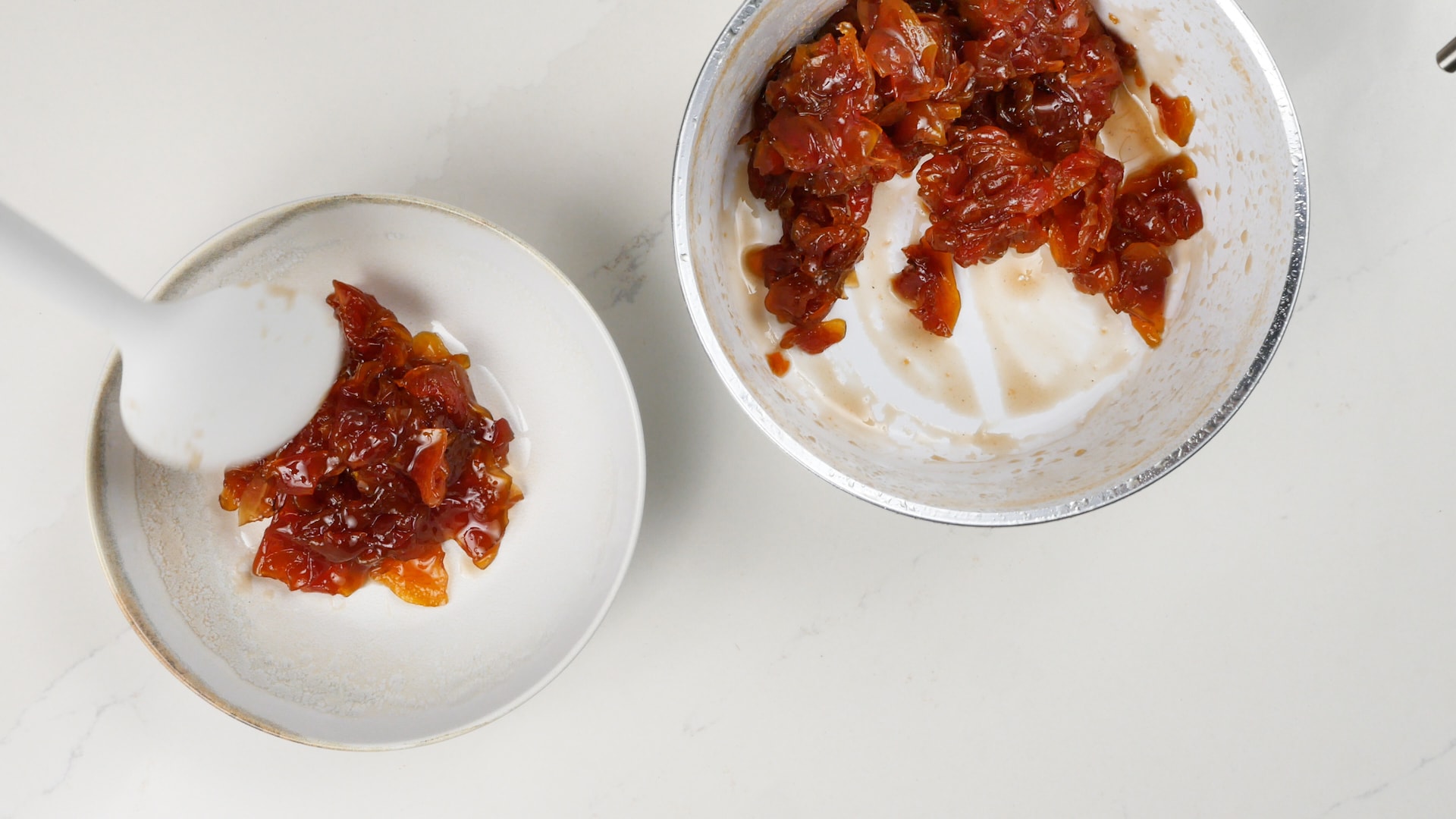 Serving and storing: Cool to room temperature, then chill before serving.Store in a lidded jar and refrigerate for up to a week, or serve once chilled.
Serving and storing: Cool to room temperature, then chill before serving.Store in a lidded jar and refrigerate for up to a week, or serve once chilled.
Video
Tips and Notes
Nutrition
Nutritional information is calculated automatically based on ingredients listed. Please consult your doctor if you need precise nutritional information.
References
- Ornes de Perelló, Amanda (1962) Cocina Criolla. Sto. Dgo: Ed. del Caribe
- De Bornia, Ligia (1959) La Cocina Dominicana Sto. Dgo


